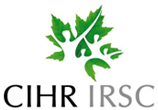The Cerebellum
- Published20 Mar 2012
- Reviewed20 Mar 2012
- Source CIHR – Institute of Neurosciences, Mental Health and Addiction
The cerebellum appears to play several roles. It stores learned sequences of movements, it participates in fine tuning and co-ordination of movements produced elsewhere in the brain, and it integrates all of these things to produce movements so fluid and harmonious that we are not even aware of them.
The pathologies of the cerebellum have long revealed that this part of the brain is involved in motor co-ordination. The cerebellum is divided into three regions, each of which is connected to a specific structure in the brain and involved in a specific function.
- The archicerebellum (or vestibulocerebellum) first appeared in fish. It is connected to the vestibule of the inner ear and is involved in balance.
- The palaeocerebellum (or spinocerebellum) consists mainly of the vermis, an axial structure and is superimposed on the archicerebellum in amphibians, reptiles and birds. The palaeocerebellum is connected to the spinal cord and controls postural muscle activity by influencing muscle tonus. To play its role in maintaining body posture, a muscle must be tensed. The cerebellum therefore controls muscle tension at all times while releasing those muscles required to execute movements.
- In mammals, the neocerebellum (or cerebrocerebellum) is superimposed on these two other parts. It is more voluminous in primates and especially so in humans. It consists of the cerebellar hemispheres, is connected to the cortex and contributes to the co-ordination of voluntary movements. Among other functions, it ensures that when one set of muscles initiates a movement, the opposing set acts as a brake so that the body part in question arrives at its target precisely.
The grey matter of the cerebellum is also organized somewhat like the grey matter of the cerebral hemispheres: a cortex that forms the grey matter at the surface and deep nuclei that serve as relays for the efferent pathways leaving this cortex . There are four of these cerebellar nuclei on either side of the median line: the fastigial nuclei, also known as the roof, serve as relays for the archicerebellum; the emboliform and globose nuclei do so for the palaeocerebellum; and the dentate nuclei, located in the middle of each cerebellar hemisphere, do so for the neocerebellum.
For the body to make any given gesture, the sequence and duration of each of the basic movements of each body segment involved must be controlled in a very precise manner. One of the cerebellum's jobs is to provide this control over the timing of the body's movements. It does so by means of a loop circuit that connects it to the motor cortex and modulates the signals that the motor cortex sends to the motor neurons.
In humans, the cerebellum also plays a role in analyzing the visual signals associated with movement. These signals may come either from the movement of objects within the field of vision or from the sight of the moving body segments themselves. The cerebellum appears to calculate the speed of these movements and adjust the motor commands accordingly. Errors in such calculations largely account for the poor motor control observed in patients who have suffered injuries to the cerebellum.
As regards cognitive impairments, some signs of cerebellar involvement have been found in the areas of language, attention, memory, and emotions. For example, in some autistic children, cognitive delays have been partly attributed to insufficient development of certain parts of the cerebellum.
Lastly, another important property of the cerebellum is its ability to learn and remember, which is based, among other things, on the distinctive cell architecture of the cerebellar cortex.
Cerebellar syndrome is the term used to designate manifestations of damage to the cerebellum, regardless of origin. For example, if a patient with cerebellar syndrome tries to touch an object, the movement of his hand will begin late, then accelerate beyond what is normal. Braking also will be too late, and inefficient, so that his hand ends up missing the object and going past it. This movement then ends with oscillations of the hand and arm.
People with cerebellar syndrome also appear to have some problems in co-ordinating balance and posture. These people have an uncertain gait, spreading their feet more widely apart as they strike the ground. If these people are jostled, the reflexes that compensate for the imbalance overreact, often resulting in oscillations of the entire body. These people also cannot tilt their trunks forward or backward without losing their balance.
CONTENT PROVIDED BY

CIHR – Institute of Neurosciences, Mental Health and Addiction
Also In Archives
Trending
Popular articles on BrainFacts.org

















